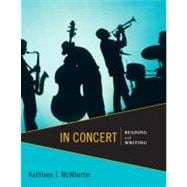
Reading and Writing Success Starts Here!
PART ONE Introduction to Reading and Writing
Chapter 1 An Overview of Active Reading
Vocabulary Workshops
Chapter 2 An Overview of the Writing Process
Chapter 3 Reading and Learning from College Textbooks
Chapter 4 Reading and Evaluating Visuals
PART TWO Reading, Writing, and Organizing Paragraphs
Chapter 5 Topics, Main Ideas, and Topic Sentences
Chapter 6 Details, Transitions, and Implied Main Ideas
Chapter 7 Organization: Basic Patterns
Chapter 8 Organization: Additional Patterns
Chapter 9 Strategies for Revising Paragraphs
PART Three Reading and Writing Essays
Chapter 10 Reading, Planning, and Organizing Essays
Chapter 11 Drafting and Revising Essays
Chapter 12 Reading and Writing Essays with Multiple Patterns
PART Four Critical Thinking, Reading, and Writing
Chapter 13 Critical Thinking: Making Inferences and Analyzing the Author’s Message
Chapter 14 Critical Thinking: Evaluating the Author’s Techniques
Chapter 15 Critical Thinking: Reading and Writing Arguments
PART five Reading and Writing from Sources
Chapter 16 Writing Essays Using Sources
PART SIX Handbook: Reviewing the Basics
Credits
Index
The New copy of this book will include any supplemental materials advertised. Please check the title of the book to determine if it should include any access cards, study guides, lab manuals, CDs, etc.
The Used, Rental and eBook copies of this book are not guaranteed to include any supplemental materials. Typically, only the book itself is included. This is true even if the title states it includes any access cards, study guides, lab manuals, CDs, etc.